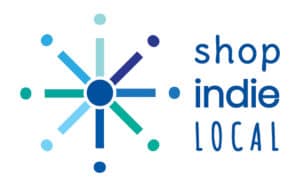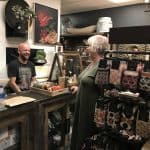With 89,567* online tools for connecting, sharing, networking, etc., how do you ever prioritize and keep online socializing from taking over your work?
[*I made up that number, of course]
 Our Friend Glenda Watson Hyatt set me to work on this topic, and explained what she meant via email:
Our Friend Glenda Watson Hyatt set me to work on this topic, and explained what she meant via email:
My quandry is: I have all these tools – twitter, facebook, MyBlogLog, YouTube, flickr, ziki, Linkedln, stumble, digg and, of course, my two blogs – some of which I use way more than others. I would like to know how to integrate them effectively so that I am using them efficiently and maximizing benefits. How do I analyze which ones I should keep? Drop? Add?? How much time should I spend on each? Doing what? I mean could spend all day every
day using them, but that doesn’t get my actual work done. Where do I draw
the line? And then how do other marketing strategies [ezines, article directories ] fit in?
Believe it or not, I have a plan. It’s our Simplified Marketing Plan.
Here’s the outline:
- Name and describe each market
- Tell what methods you will use to reach them
- Establish the cost in time and in money
- Mesh this with your business plan
1. Know your markets.
If you haven’t defined each of your markets, jump on that now. For a relatively simple consulting business, you might have several target customers. You might target small businesses for consulting, individuals for coaching, and larger corporations as sponsors for your blog or info products. Make sense?
For example, if Glenda offered disability issues awareness training and consulting, she might target medium size companies, their HR managers, and HR related organizations. (I’m making up this example about Glenda’s business, so don’t jump to any conclusions.) She’ll need to find out where those people spend time online, and what services they need, want, and purchase.
You need to know about all those different customers so that you can develop the right compelling offer for each of them, in the next step.
2. Decide on methods.
Once you know your targets, you can develop a compelling offer to hook them. For example, when Susan Reynolds taught children’s art classes, she developed an idea for a short drawing lesson for moms and kids together. It was a free sample, addressed the proper target (moms), and left a lasting impression. That’s a compelling offer!
To get that offer in front of the right people, you need to use the right online tools. In step one, you should have learned where your targets are online. Then you use these online tools to share that offer when appropriate, and to position yourself as an expert.
Start with a list of the online presence tools you use right now. Ask customers which ones they have heard of, and which they use. Then expand out to some potential customers. Ask them the same things. Then visit other tools and see who is present. You goal is to come up with a list of online tools that have the potential to let you connect with customers, then build them into the plan.
Glenda might find that her targeted folks use the Society for Human Resources Management website, read a few specific blogs, participate on a few online forums, that most of them are on Facebook, and that a pocket of them are on Twitter. Given this short list, she can set goals and measures for herself on these specific tools. Yes, she can still play with other tools, use other networks for personal enjoyment, or just learn new things, but it doesn’t count as part of working the plan.
I’m not suggesting you change how you act online; there is no need to be all sales and advertising all the time. Keep using these tools as a part of the community, not as an advertiser. Do let folks know what you offer; talk some about business, just so they’ll know you are in business! In fact, I just solicited WP design quotes from Twitter, and I contacted one person directly because they announced they were in the business. It does pay to talk about yourself, in moderation.
3. Establish the cost in time.
Now we’re getting somewhere! Of course, there isn’t just one answer to this, so we’ll have to make some guidelines and share some suggestions.
Your plan focuses on being sure to use the methods that reach potential customers, and to place your compelling offer in front of them.
If Glenda’s targeted customers are using Twitter, terrific! She’s already there, so she can add that to her marketing plan. Maybe she doesn’t currently visit the forums she discovered by talking to customers, so she’ll pick the most promising one and add it to her plan. Glenda has her own blog to include in the plan, along with the selected blogs frequented by her targets. Other tools not in her plan are considered outside of work, or personal time activities.
How much time? Well, put more time in on those tools that produce the best results. If you get most of your blog traffic increases from Twittering, you’ll want to develop the habit of carefully promoting posts on Twitter. For less productive tools, give your self less time with them. No need to go hang out at MyBlogLog, if you can learn to update it in just a few minutes.
4. Mesh it with your plan.
I recommend you integrate these tools into your daily plan. You do have some kind of daily plan, don’t you? No? Well, I would recommend you Focus on Your Income Producing Activities, including your online marketing tools. If you don’t do anything else, do this!
You
How do you manage your online time? How do you allocate your efforts among the myriad of tools available? I’d love to hear your experiences.
This article is part of the Small Biz 100, a series of 100 practical hands-on posts for small business people and solo entrepreneurs, whether in a small town, the big city, or in between. If you have questions you’d like us to address in this series, leave a comment or send us an email at becky@smallbizsurvival.com. This is a community project!
Get the whole series by subscribing to Small Biz Survival. New to SmallBizSurvival.com? Take the Guided Tour.











Becky,
Some great tips here! I humbly also recommend my own Online Marketing Plan workbook that I put together. It’s free, and can be obtained at http://tinyurl.com/6dqrpn
Shama, thanks for sharing this. I’ve just downloaded a copy, and I like the workbook format. I look forward to looking at it more in depth soon. Thank you!
Thank you, Becky! Your post has organized my scrambled brain. I spend a lot of time reading blogs on business, marketing, blogging, and real estate. This is what I do to learn, and spark creativity within myself. This is NOT where my clients are. Doh! Sometimes it takes another person stating the obvious before I hear it. Now, I need to discover how to reach my target – real estate agents not effectively using online tools when they are not online…
Kathy, to find out where your target people are spending time, ask them. Take a few existing customers or find a few prospects, and start talking with them about how they spend time when they go online. The best way to find out what your customers need is to ask them!
Thanks for commenting, and I’m glad you found some value in it.
Great topic, especially as I’m swimming in the social media tools and not using many of them effectively right now. Time to target and prioritize!
Thanks, Karen. This is one way to help prioritize.